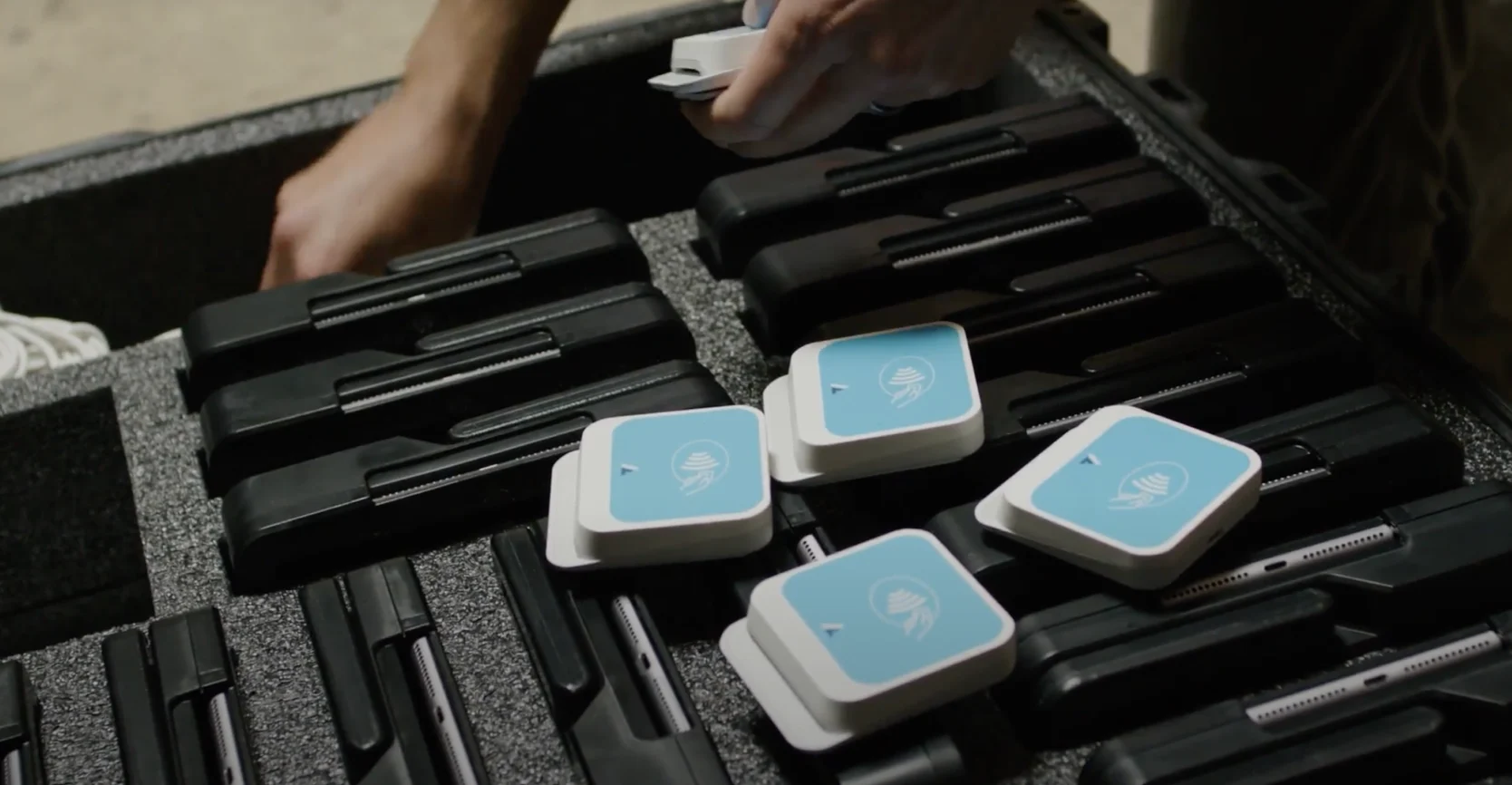Challenge
atVenu’s online platform already simplified the sales process for merchandise sellers at live events, making it easy for them to keep track of and replenish stock, as well as make sure venue operators, merch companies and artists all got their share.
But in recent years, as more and more venues went cashless, atVenu saw an opportunity to take in-person card payments too. It partnered with another payments company to integrate point-of-sale (POS) into its back-end system, but quickly found its systems and hardware did not work well in the kinds of temporary and transient environments its vendors often found themselves in.
“This is not a friendly, little coffee shop with stable WiFi and power,” says Ben Brannen, co-founder and president of atVenu. “We’ve experienced it all. Rain, sleet, snow, dust, heat, beer.”
After its payments partner went out of business, atVenu needed a reliable way to make in-person card and contactless payments as smooth as possible in venues that may not have a roof, let alone a stable internet connection.
Solution
atVenu’s co-founders decided to source the hardware themselves at first, and partner with Stripe to provide payments.
The company had heard positive feedback about Stripe from other entrepreneurs and found Stripe’s API easy to integrate into atVenu’s existing platform, but it was Stripe Connect that convinced atVenu to make the partnership official. Stripe Connect allowed atVenu to take funds from thousands of artists and multiple venues and festivals, silo them, and pay them all reliably.
“Stripe Connect gave us the credibility and our customers the confidence that the money is going to be taken care of,” says Brannen.
There were issues with the hardware atVenu had sourced from other operators, however, as supply chain delays made it difficult to get the sometimes thousands of handsets it needed for a single festival weekend.
So when Stripe launched its own Terminal POS devices in 2019, atVenu was among the first to deploy and test the BBPOS Chipper 2X, BBPOS Wisepad 3, and Stripe Reader M2 devices in the wild.
“Stripe’s openness, willingness, and encouragement to get real-world feedback on products, rather than saying, ‘Here you go, deal with it,’ has been great,” Brannen says.
The Stripe Terminal sets proved a success, and offered new payment options like Apple Pay and EMV, prompting atVenu to replace its existing devices with them.
Results
atVenu’s transactions have gone up by 310% since 2019, despite the impact of the economic slowdown and the pandemic on the live events industry.
Reliable and robust
atVenu’s payment capabilities have enabled it to add food and drink sales to its live events platform. And unlike with previous payment solutions, the company doesn’t have to worry if Stripe’s hardware and systems can cope.
“The API can definitely handle the scope of our business,” says Derek Ball, atVenu’s co-founder and CEO. “In one night we’ll process over $10 million of volume through Stripe without a hiccup.”
Improved supply chain
The reliability and scalability of Stripe’s platform meant atVenu could operate with a relatively small staff and fewer account managers.
“Working with Stripe allowed us to give a more fully featured product to our customers, reduced our overhead, and streamlined our supply chain,” says Ball.
New features
The close partnership with Stripe also meant atVenu could regularly offer new features and product lines to its customers.
When Stripe launched Treasury and started offering financial services, for instance, atVenu quickly saw an opportunity to speed up the tricky post-event disbursement process. Since July 2022, the company has handled disbursements for more than 15 shows, moving hundreds of thousands of dollars.
Being able to send, receive, and store funds accurately in one simple Dashboard has also made the process five times faster, so that it now takes just five to six days instead of four to six weeks.
The relationship between Stripe and atVenu has been very synergistic and reciprocal. We’ve helped Stripe develop new products that our customers value, and Stripe’s continual expansion of its product offerings enable atVenu to grow our revenue and customer base.


